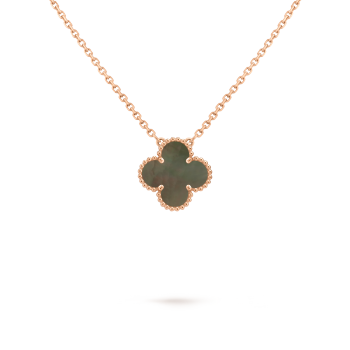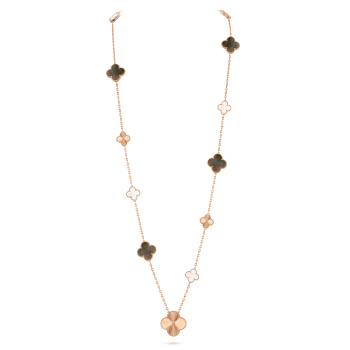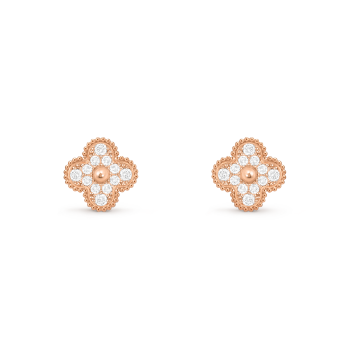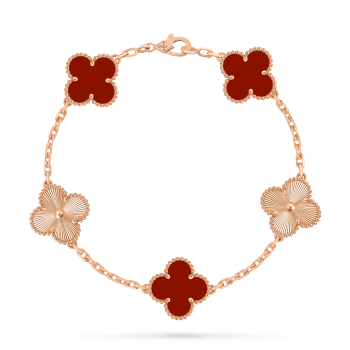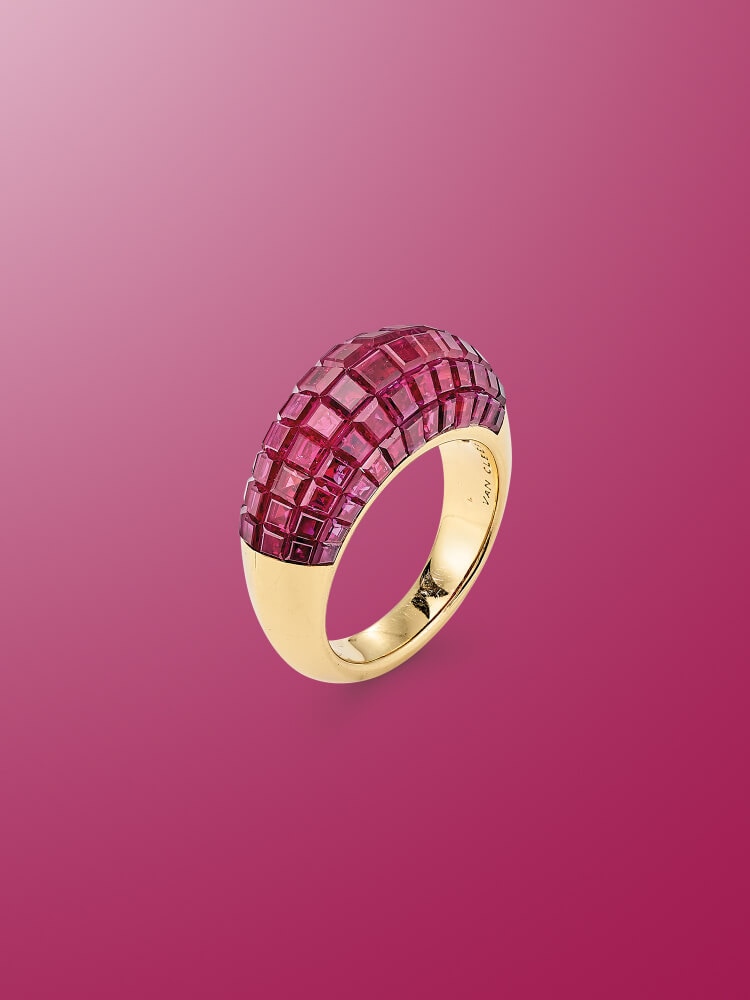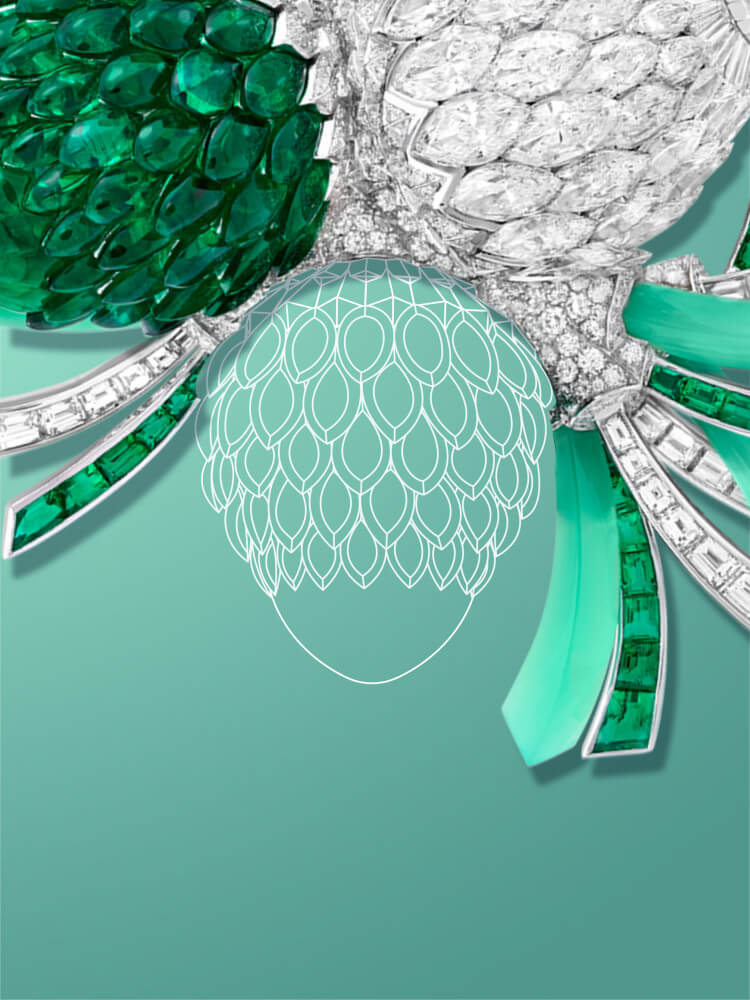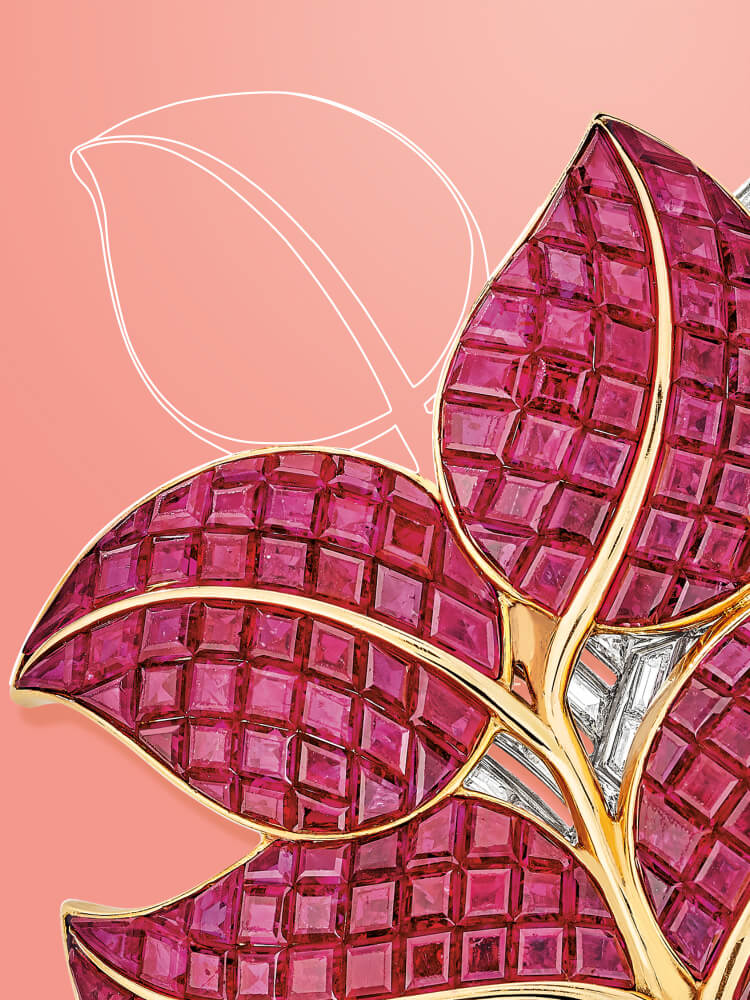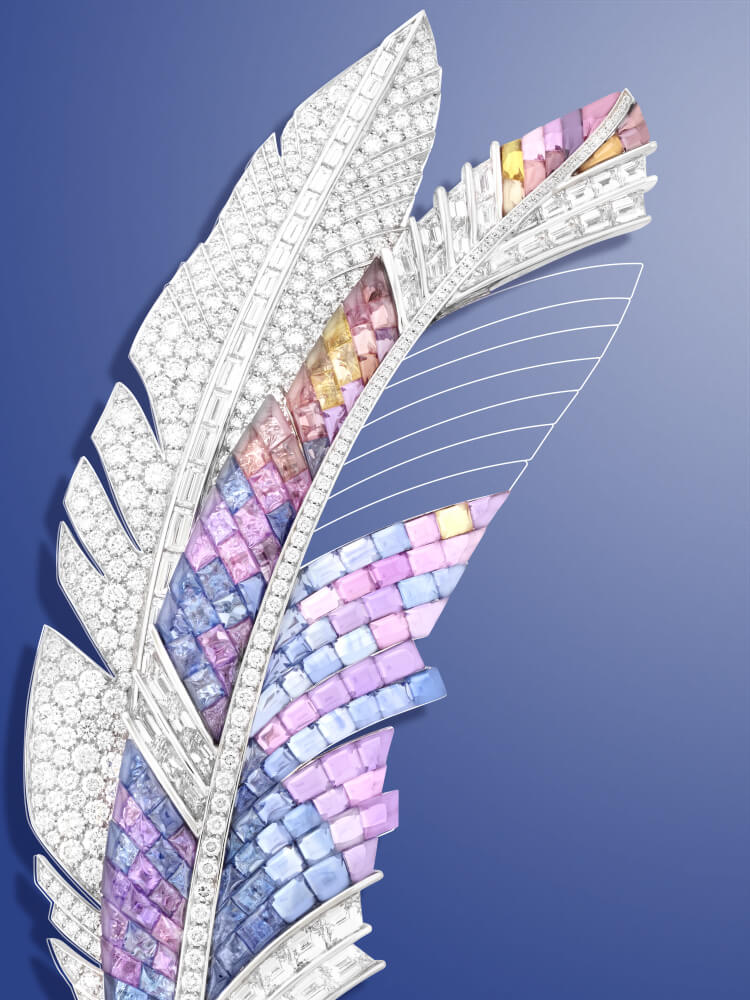Mystery set
Patented by Van Cleef & Arpels in 1933, this setting technique allows the metal to disappear in favor of precious stones.
-
Workshop card of one of the first creations in Mystery Set sapphires, 1934Van Cleef & Arpels Archives
-
Patent for the Mystery Set filed by Van Cleef & Arpels in 1933INPI Archives
-
Patent for the Mystery Set filed by Van Cleef & Arpels in 1933INPI Archives
-
Patent for the Mystery Set filed by Van Cleef & Arpels in 1933INPI Archives
-
Patent for the Mystery Set filed by Van Cleef & Arpels in 1933INPI Archives
A feat of jewelry-making
After cutting the precious stones one by one, the lapidary meticulously aligns them on golden rails: most often rubies, but also sapphires, emeralds and diamonds. Once in position, the gemstones cover the entire set surface of the piece, lending it a velvety glow.
A masterful technique
The level of expertise required to create a Mystery Set piece is such that only a few craftsmen have mastered the technique. A single clip calls for more than 300 hours of work in the hands of the jeweler and lapidary.
Infinite inventiveness
Over the years, other techniques have been developed to complement the traditional Mystery Set, playing on volume, color and transparency. While the Navette Mystery Set technique yields a striking relief effect, the Vitrail Mystery Set technique lets light pass through colored sapphires glowing with pastel nuances.
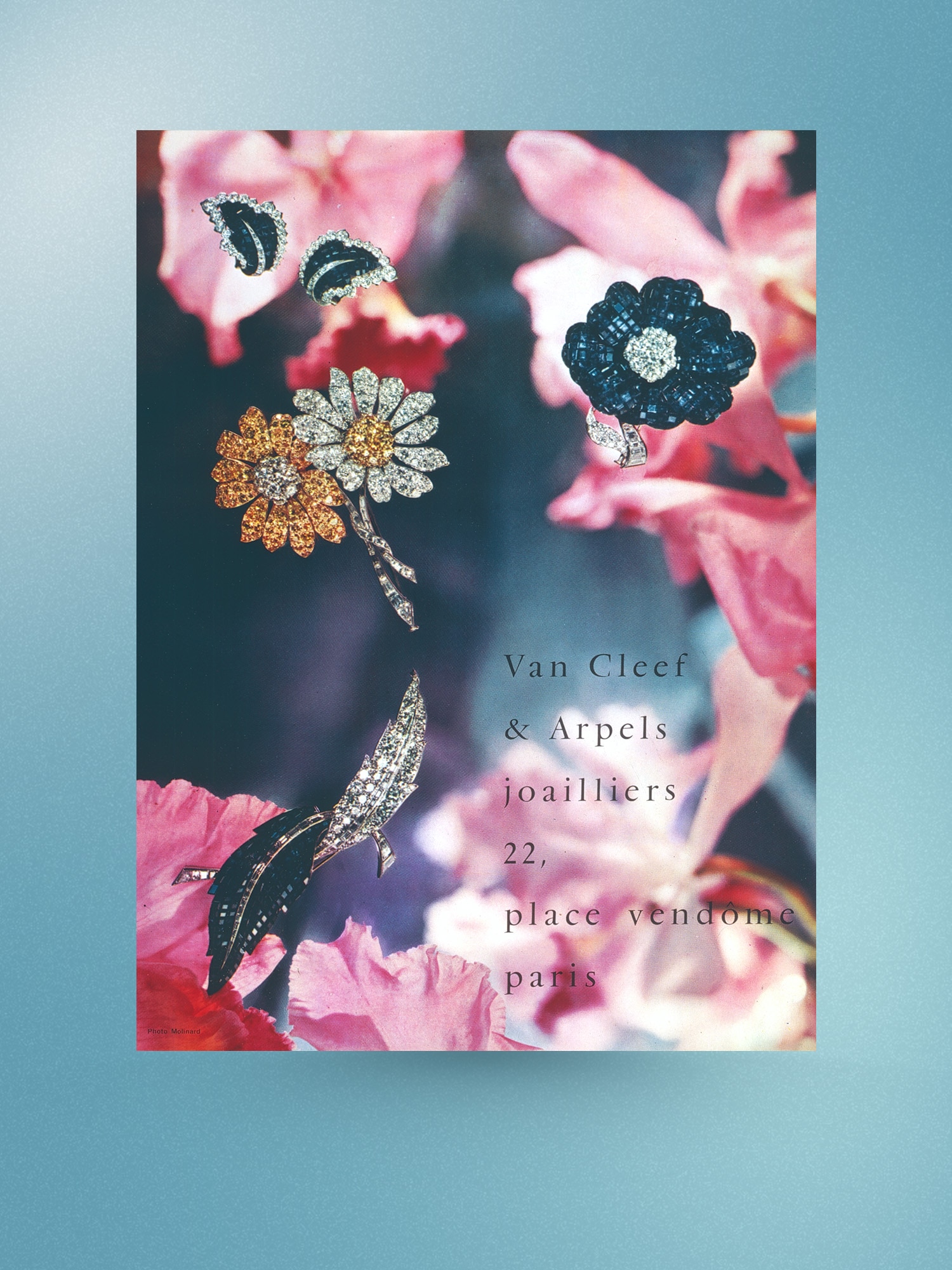
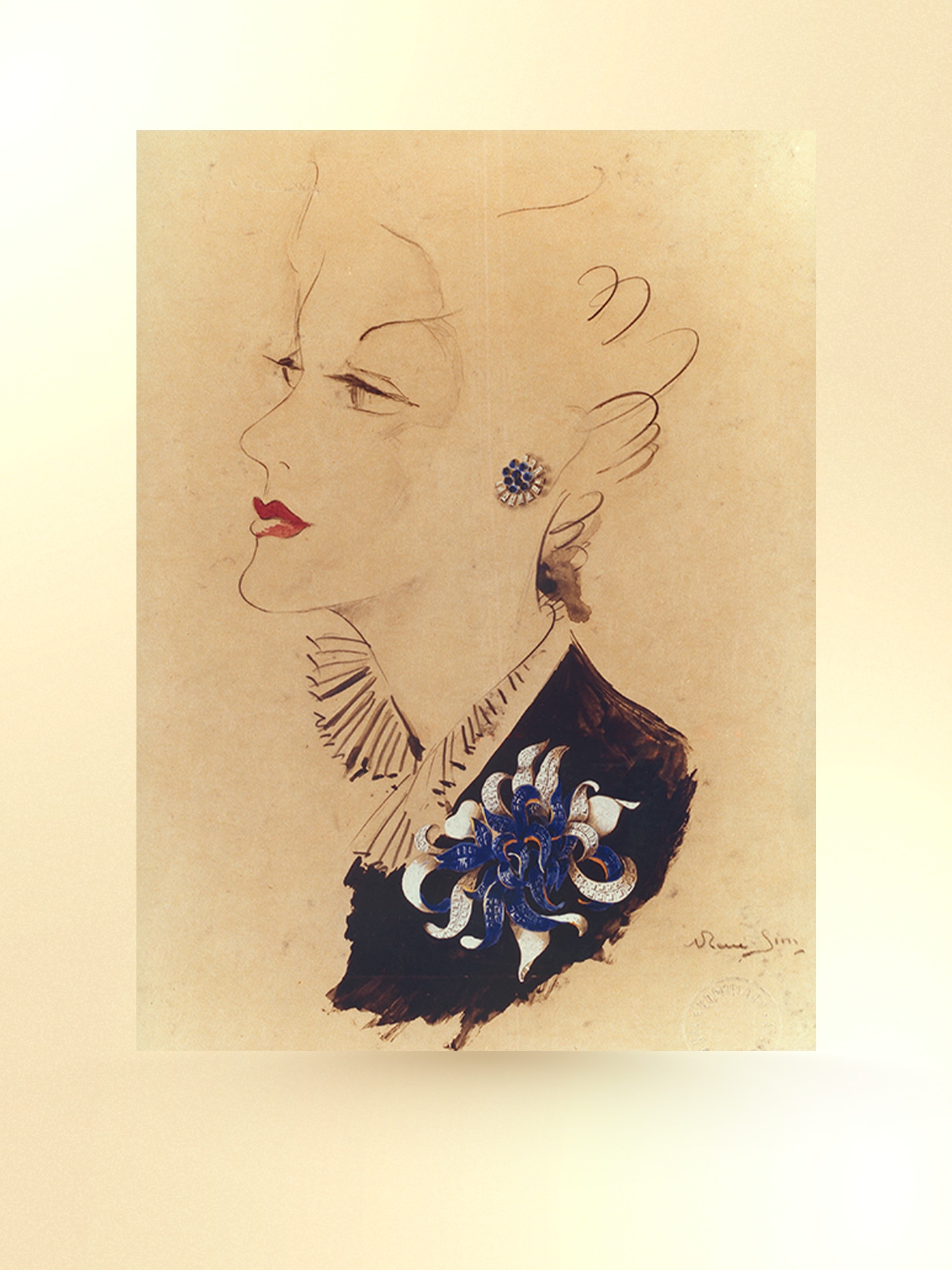
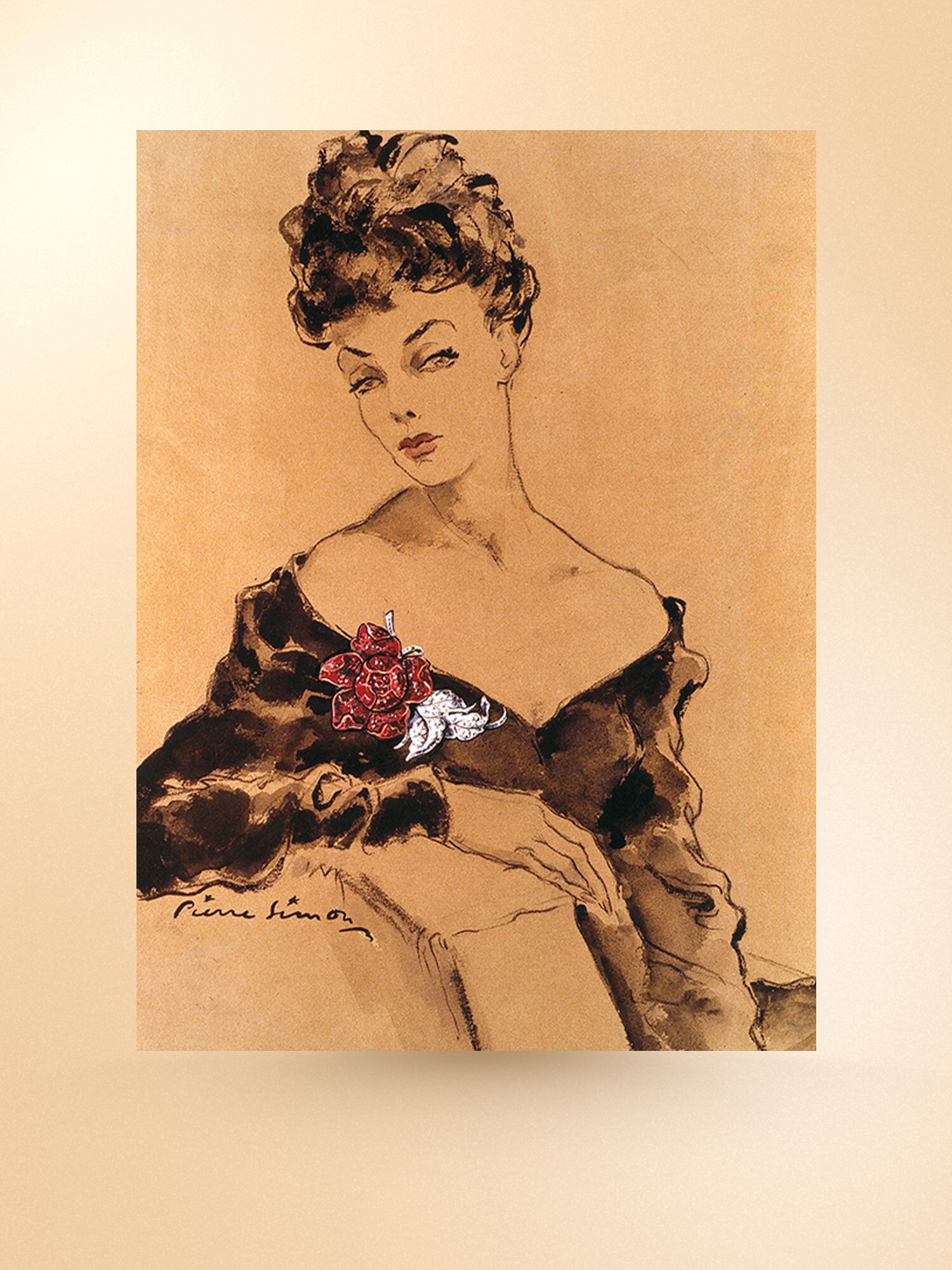
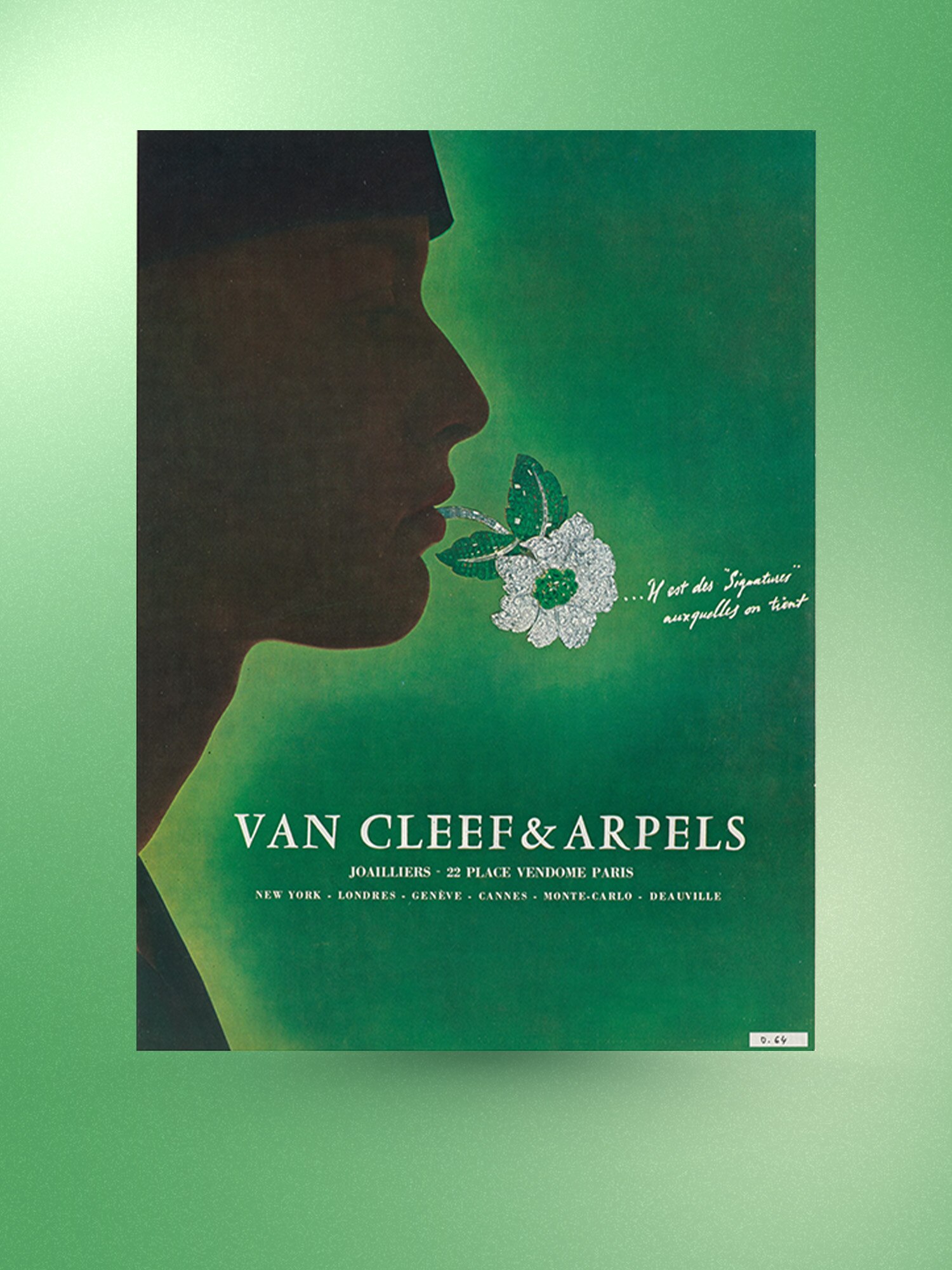
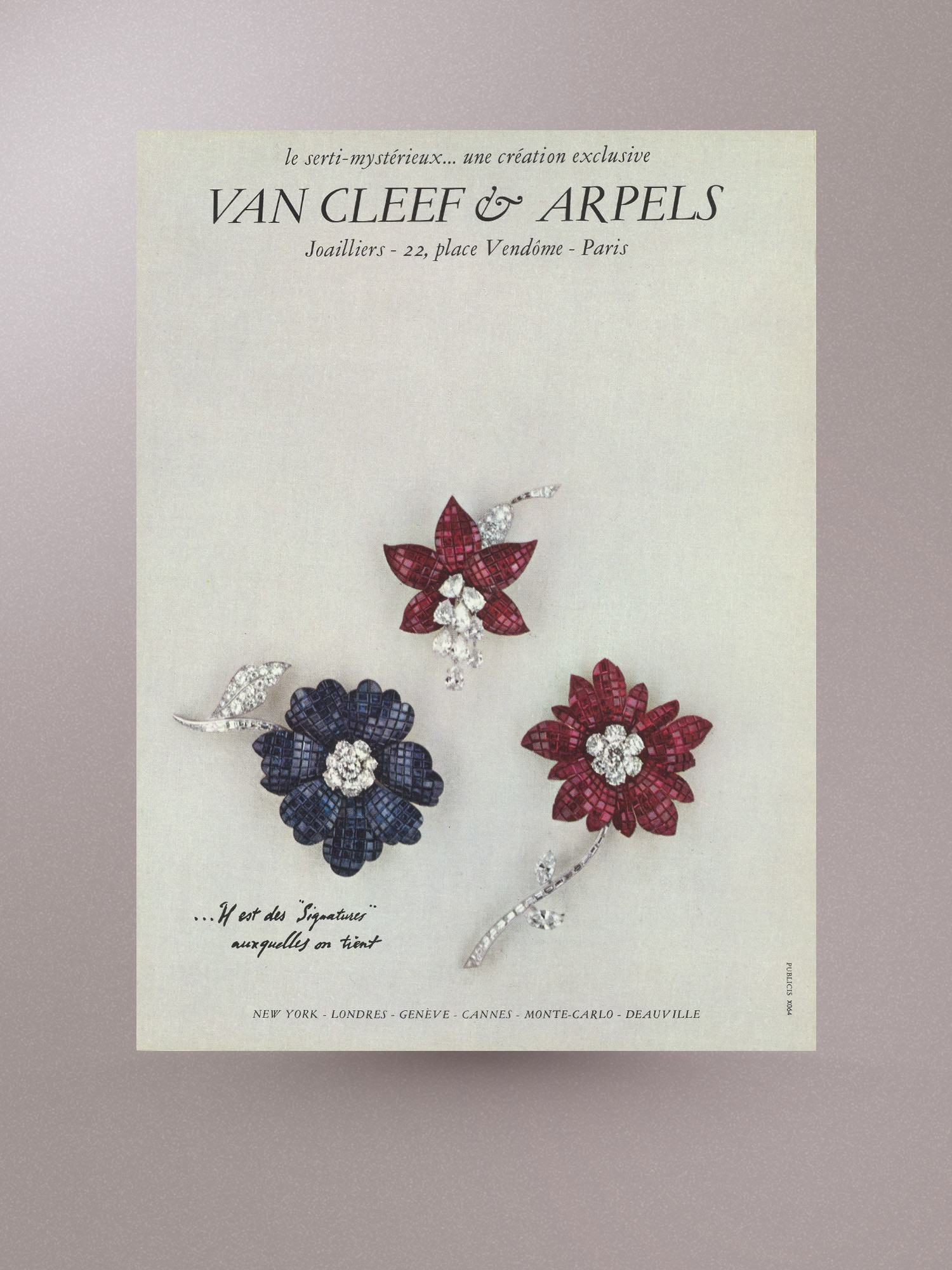
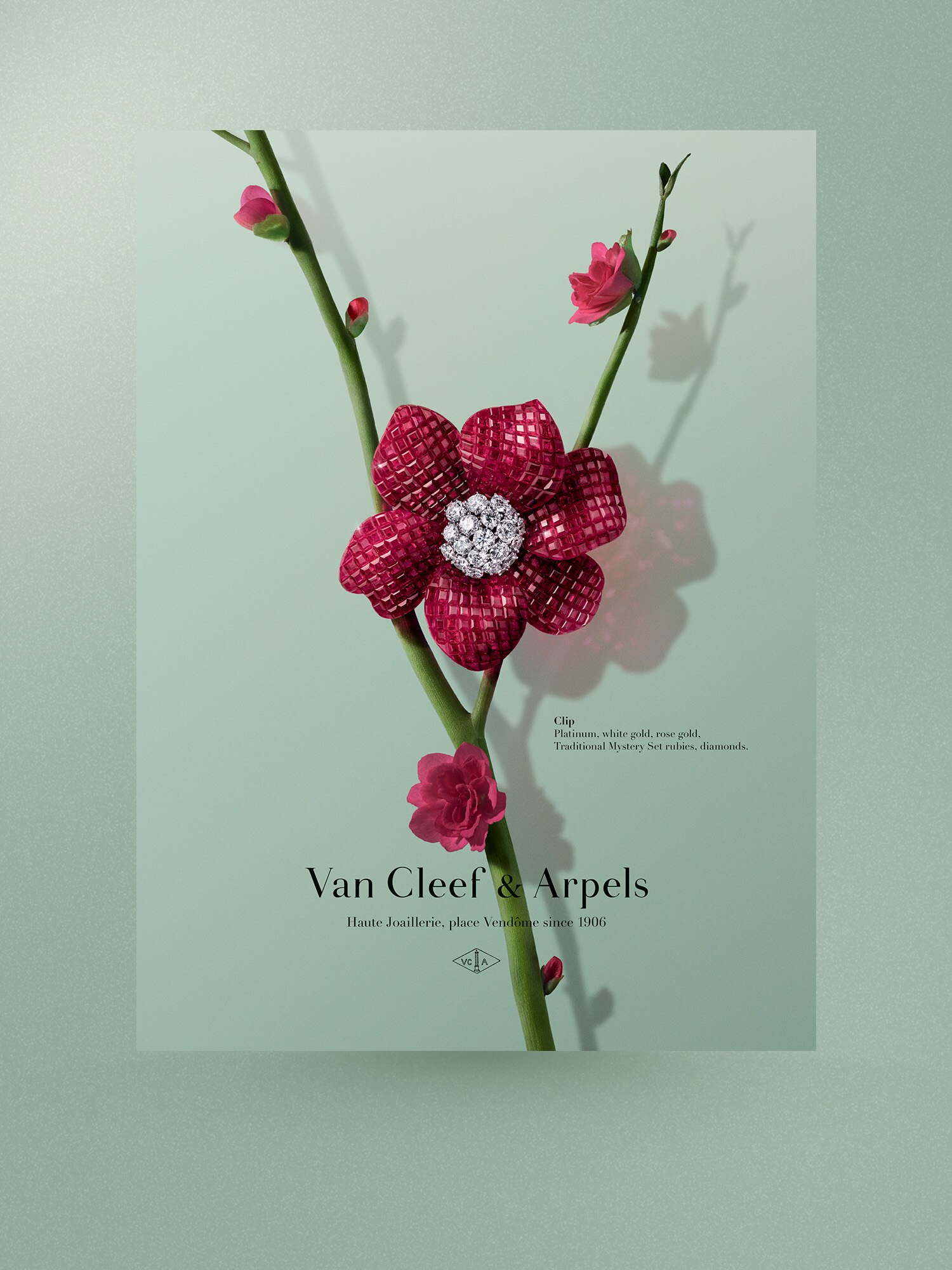
-
Van Cleef & Arpels advertisement, 1958©Publicis Conseil
Van Cleef & Arpels Archives -
Van Cleef & Arpels advertisement, 1937Van Cleef & Arpels Archives
-
Van Cleef & Arpels advertisement, 1943Van Cleef & Arpels Archives
©Pierre Simon Family/ADAGP, Paris, 2024 -
Van Cleef & Arpels advertisement, 1964Van Cleef & Arpels Archives
-
Van Cleef & Arpels advertisement, 1968Van Cleef & Arpels Archives
-
Van Cleef & Arpels advertisement for the Louvre clip, 2021
Drawing inspiration from flowers
Dazzling flowers, feathers fluttering in the wind, whirling leaves and more: the Mystery Set technique imbues nature-inspired creations with three-dimensional dynamism, like the double Peony clip created in 1937.
